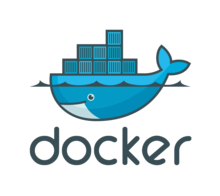devops-novice
devops-novice
Docker Hands-on

Introduction
Just execute the commands and you will get taste of Docker.
We will use docker images present on docker hub.
Later we will create a simple docker image and play with it.
Try out different docker commands
We will use hello-world image from docker hub to try out basic commands.
Docker Basic commands
Commands covered:
pull, push, ls, ps, run, logs, start, stop, restart, rm
docker pull
docker pull hello-world
docker pull will always pull ‘latest’ tag if not specified.
docker push
You will need docker hub account for this (Can skip for now).
docker push hello-world
list docker images
docker images
docker image ls
run docker container
We will use hello-world image to try out docker commands.
docker run hello-world
run docker container with options
Give name of your choice to the container.
docker run --name mycontainer hello-world
list running containers
docker ps
docker container ls
list all containers
docker ps -a
docker container ls -a
get container logs
docker logs mycontainer
You can stream the logs using -f or --follow.
docker logs -f mycontainer
docker logs --follow mycontainer
start/stop/restart container
docker start mycontainer
docker stop mycontainer
docker restart mycontainer
remove container
Container must be stopped before removing.
docker rm mycontainer
forcefully remove a running container
docker rm -f mycontainer
docker rm --force mycontainer
Docker run advanced commands
The docker run command first creates a writeable container layer over the specified image, and then starts it using the specified command.
We have multiple options available with docker run which can be used to run docker container.
Running apache tomcat image
docker run -it --name mytomcat --rm -p 8888:8080 tomcat:9.0
| option | Description |
|---|---|
--interactive , -i |
Keep STDIN open even if not attached |
--tty , -t |
Allocate a pseudo-TTY |
--rm |
Automatically remove the container when it exits |
--publish , -p |
Publish a container’s port(s) to the host |
Visit http://localhost:8888
You should get 404, this means that your container is up and running
You can try out commands in above section on this container.
Press Ctrl+c to exit container.
Running MySQL image
Creating and running your own docker image
Create a directory and use it as docker context
mkdir docker-learn
cd docker-learn
Create a file named Dockerfile.
Add below lines to the file.
FROM alpine
ENTRYPOINT ["sh","run.sh"]
Create a file named run.sh.
Add below lines to the file.
#!/bin/sh
echo "Yay! I have created a docker image and started container using it"
Execute below command to create docker image.
docker build -t myfirstimage .
This will create an image named myfirstimage.
Running docker image
We will run the docker image created above.
Execute below command to run the image.
docker run --name myfirstcontainer myfirstimage
You should get output as:
Yay! I have created a docker image and started container using it
Next: Docker Cheatsheet